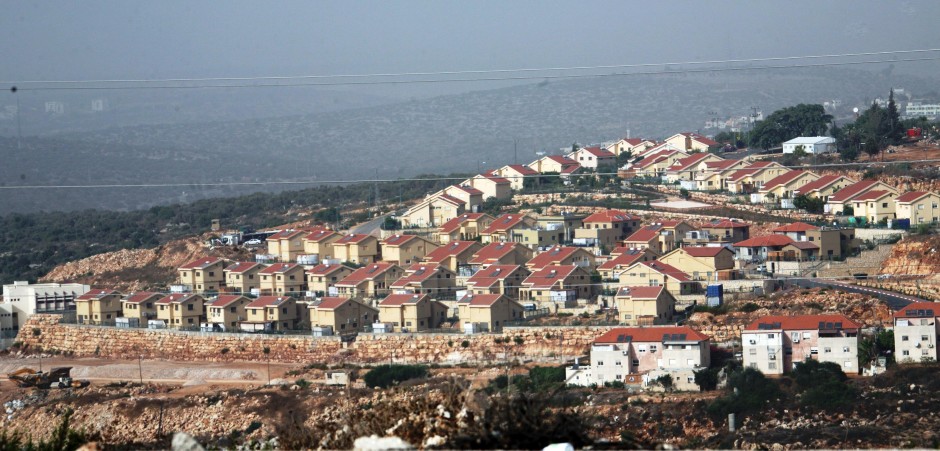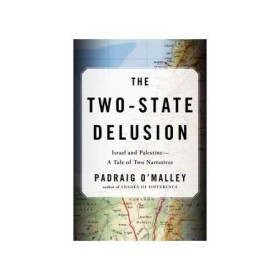Is the two-state solution dead?
One might think so, judging by the latest violence convulsing the West Bank and East Jerusalem.
Padraig O’Malley, a professor of peace and reconciliation at the University of Massachusetts, believes that the two-state solution has had its day in the sun and has been overtaken by events on the ground.
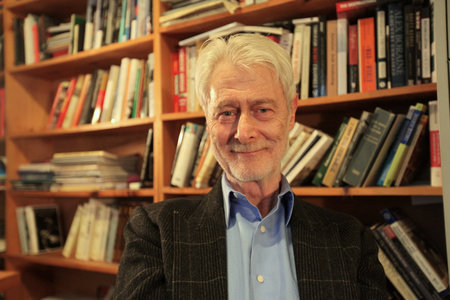
“The obstacles to implementing a sustainable and enduring two-state solution agreement have exponentially multiplied over the past twenty five years,” he writes in his thoughtful, meticulously-researched book, The Two-State Delusion: Israel and Palestine — A Tale of Two Narratives (Viking, Penguin Group). “The idea that a settlement will emerge from the labyrinth of intricacies, conceits, disparagements, unfathomable misunderstandings, endemic fears and competing claims layered with hate is becoming ever more remote.”
In his view, the long-running Arab-Israeli conflict has grown more intractable since the war in the Gaza Strip and the breakdown of peace talks in 2014.
“Not only has distrust hardened and deepened, but it has increasingly become a source of hatred and paranoia,” he observes. “Both sides see the conflict as existential, zero-sum, and therefore seemingly irresolvable. It is psychologically embedded in their DNA.”
The spirit of compromise and reconciliation, he says, has been hijacked by extremists.
One of the problems, he points out, is clashing historic narratives.
To the Palestinians, Israel is a “colonial creation” imposed on them by military force. To the Israelis, the Palestinians are bent on destroying their Jewish nation. “The Palestinian perspective is anchored in the … nakba, and the ensuing occupation of their homeland. The Israeli perspective is anchored in the belated return to their homeland and the Holocaust. Both claim the same land.”
“The narrative of collective memory is partial, selective and distorted,” adds O’Malley. “It serves to foster group cohesion by appealing to existential threats. One’s own group is both hero and victim; the history of suffering and losses gives weight to the righteousness of the cause. In contrast, the opposing group is viewed as wicked, illegitimate and responsible for the outbreak and the continuation of the conflict.”
O’Malley claims that neither side has prepared their respective constituencies for real peace. He criticizes the Palestinian leadership for not having told its people that the right of return is a non-starter. He holds Israeli leaders responsible for having failed to internalize the possibility that Jerusalem will have to be divided to accommodate Palestinian statehood. “Instead, the leaderships offer meaningless recitations that both sides will have to make ‘painful’ compromises.”
Although O’Malley tends to be pro-Palestinian in his analysis, he does not hesitate to lambaste the Palestinians, who, he says, foolishly rejected partition plans in 1937 and again in 1947. But he understands why the Palestinian Authority, led by President Mahmoud Abbas, insists on a return to the pre-1967 lines, which would give the Palestinians only 22 percent of historic Palestine. “For the Palestinians, the 1967 borders are the compromise that cannot be further compromised,” he asserts.
The Palestinians have also erred in refusing to acknowledge rightful Jewish claims to the land. The former Palestinian leader, Yasser Arafat, harmed his people’s cause by denying the historical connection of Jews to Jerusalem, he says.
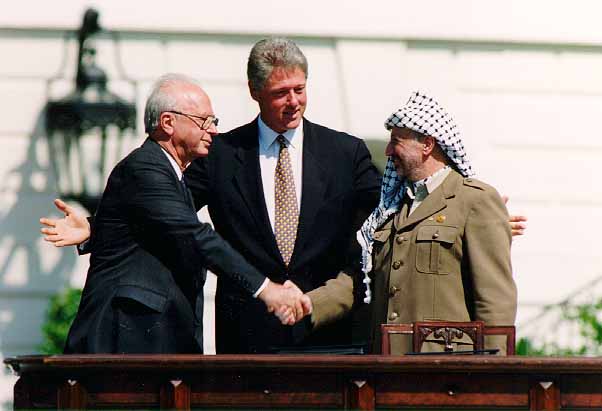
In addition, O’Malley takes the Palestinians to task for minimizing the importance of security to the Israelis. “In this assessment, they are mistaken. Israeli security concerns are not a ploy.”
O’Malley understands that Hamas suicide attacks on Israel during the second Palestinian uprising had a “profound impact” on the collective perception of the Israelis toward the Palestinians. But if Hamas is excluded from the peace process, the prospects for a sustainable two-state solution are “next to zero,” he warns.
While he agrees that the 1993 Olso accords laid the foundations for a two-state solution, he reminds readers that they were flawed because they did not clearly define the endgame. As he correctly puts it, “They did not explicitly call for establishing an independent Palestinians state, nor did they call for a halt in settlement construction.”
According to O’Malley, the then Israeli prime minister, Yitzhak Rabin, did not envisage a fully independent Palestinian state. “All he had in mind was some form of autonomy, a governance structure that would devolve substantial powers to the Palestinians but leave Israel’s ultimate authority unchallenged.”
Pointing to two further problems, he says the Palestinians did not rein in violence, despite having renounced it as a tactic, while Israel failed to carry our promised redeployments in the West Bank.
Misunderstandings arose as well because each side had a radically different conception of Palestinian statehood.
The Palestinians he spoke to envisaged a state encompassing the entire West Bank and Gaza Strip, with East Jerusalem as its capital. The Jewish Israelis did not foresee a geographically contiguous Palestinian state. “In short, it would be an incomplete state, one that lacked full sovereignty and would be subject to many restrictions …”
O’Malley agrees with a World Bank report that an economically viable Palestinian state is achievable only if the West Bank and Gaza are “maintained as an integral economic entity.”
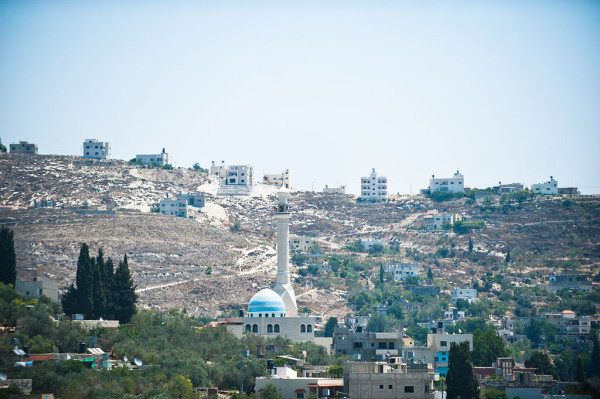
Even if Israel decides to pull out of the entire West Bank, he notes, the cost would be astronomic, at least $20 to $30 billion.
Claiming that the gravest existential threat facing Israel today as a Jewish state is “the silently creeping, inexorably irreversible changes in (its) demographic profiles,” O’Malley says Israeli leaders have three choices at their disposal.
They can opt for a two-state solution if Israel reserves the West Bank and Gaza for the Palestinians. If the status quo prevails, Israel could degenerate into an “unmistakably apartheid state” or morph into a binational state, which would spell the end of the Zionist dream.
Given these scenarios, a two-state solution would appear to be the most desirable outcome, but it’s not in the cards due to current conditions and entrenched attitudes.
In his afterword, O’Malley explains why: “The unforgiving realities in Israel and Palestine crystallized in the six months after the completion of this book. The situation in Israel/Palestine careened from one crisis to the next, reinforcing the argument of The Two-State Delusion that a two-state solution is obsolete.”
Sad but probably true.
